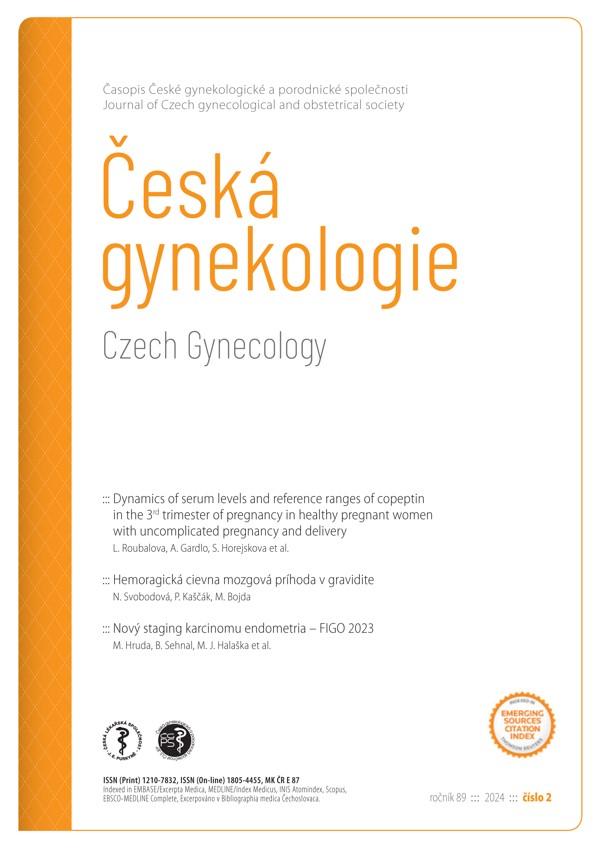Dynamics of serum levels and reference ranges of copeptin in the 3rd trimester of pregnancy in healthy pregnant women with uncomplicated pregnancy and delivery
Keywords:
copeptin – vasopressin – preeclampsia – gestational hypertension – reference ranges – pregnancyAbstract
Objective: Copeptin is a stable fragment of vasopressin. Copeptin levels have been found to reflect the degree of endothelial stress in various conditions, including acute coronary syndrome. Copeptin may be a biomarker for endothelial stress during pregnancy. However, there is still a lack of understanding of its dynamics and levels throughout pregnancy. This study aims to describe intra-individual and longitudinal changes in copeptin levels at 30th and 36th gestational weeks in healthy pregnant women with uncomplicated pregnancy and delivery and to establish specific reference ranges. Methods: A total of 125 pregnant women with uncomplicated pregnancy and delivery were included. These women were monitored throughout their pregnancy and gave birth at the Department of Obstetrics and Gynecology Olomouc University Hospital. The blood was taken at ~30 and ~36 gestational weeks. Serum copeptin levels were measured using a Kryptor Compact PLUS analyzer. For statistics, we used R software and the „referenceRanges“ package. Results: It was found that serum levels of copeptin were significantly higher in the 36th week group than in the 30th week group (P < 0.05). Cook‘s distance was used to eliminate outliers. The 30th week median was 3.377 pmol/l, reference range = 1.343–7.829 pmol/l, and the 36 week was median 4.735 pmol/l and reference range = 2.06–13.2 pmol/l. In the 36th week reference range, the median was higher than in healthy, non-pregnant women (P < 0.05). Copeptin values can exceed 10 pmol/l, particularly after the 36th week. In the 3rd trimester, this value may indicate cardiovascular and endothelial overload. Conclusion: Copeptin levels were found to vary significantly depending on gestational week. The proposed reference ranges take into account the increased secretion of vasopressin in pregnancy. The existence of specific upper reference limits represents a potential advantage in detecting pregnant women prone to hypertensive disease in the 3rd trimester.


